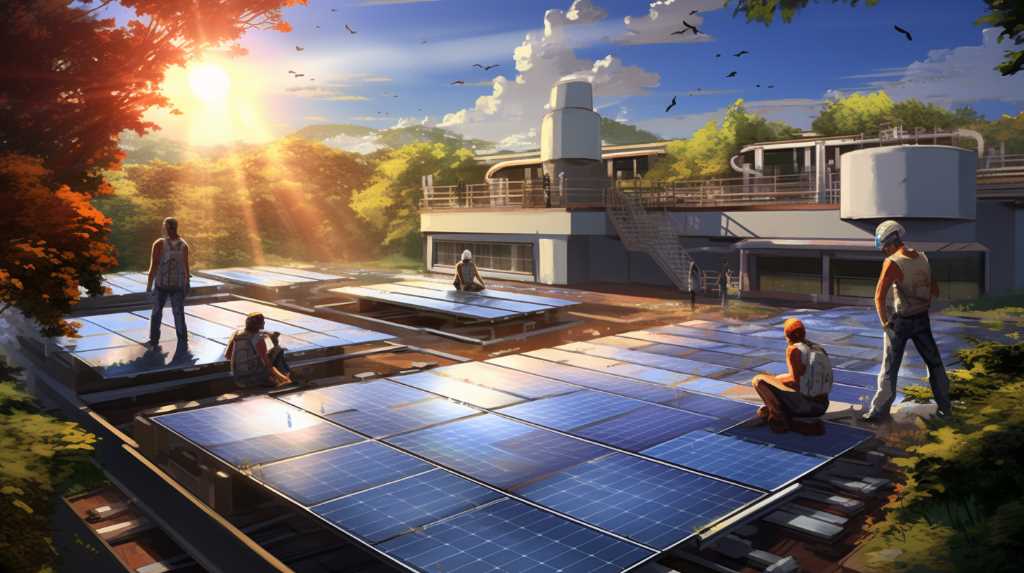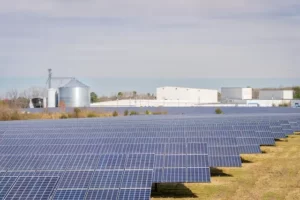You’ve invested in harnessing the sun’s power, you’ve committed to a sustainable future, and you’ve positioned yourself at the forefront of energy independence, but are you maintaining your solar panels effectively?
As a solar panel owner, it’s crucial to understand that the longevity and efficiency of your panels depend heavily on regular maintenance. From scheduling routine inspections to keeping them free of obstructions and debris, each step is a stride towards optimizing your energy output.
However, it’s not just about a simple cleaning routine; monitoring system components and ensuring proper connections also play a pivotal role in the health of your solar investment.
Stay with me, and I’ll guide you through the nuances of solar panel maintenance that could save you time and money while maximizing the return on your eco-friendly investment.
Listen To The Summary
Schedule Regular Inspections
To ensure your solar panels perform optimally, it’s essential to schedule regular inspections at least once a year. This inspection frequency isn’t just a box-ticking exercise; it’s a cornerstone for maximizing panel longevity and energy independence. Think of it as a health check-up for your power station.
Why yearly, you ask? Well, the elements can be tough on your panels. Debris accumulates, storms can wreak havoc, and even the smallest issue can escalate if left unchecked. By sticking to a regular inspection routine, you’re not just dusting off surfaces; you’re safeguarding the very heart of your energy freedom.
Inspectors will look for cracks, inefficiencies, and potential hazards that could compromise your system’s performance.
Clean Obstructions and Debris
While regular inspections are vital, keeping your solar panels clear of obstructions and debris is something you can manage more frequently to maintain their efficiency. It’s about taking control of your energy independence and ensuring nothing stands in the way of your solar investment.
Firstly, you’ve got to check for leaves, dirt, and other debris that can accumulate, particularly after storms or during autumn. Such detritus can cast shadows, reducing the panels’ ability to capture sunlight. While you’re at it, don’t forget panel angling; the correct tilt helps debris slide off naturally, minimizing your cleaning efforts.
Birds and critters love to take refuge under the warm panels, but they can cause damage or leave droppings that hinder performance. Here’s where wildlife deterrents come into play. Install them to keep the critters at bay and your panels pristine.
Use a soft brush or a non-abrasive sponge to gently sweep or wipe away any dirt. If you encounter more stubborn grime, a hose with a nozzle can do the trick, just use water, and no harsh chemicals are needed. Remember, you’re not just cleaning; you’re preserving your freedom to harness the sun’s power without hindrance. Stay diligent, and your solar panels will thank you with peak performance.
Inspect for Physical Damage
Regularly inspecting your solar panels for cracks, chips, or any signs of physical damage is crucial in ensuring their longevity and performance. Your vigilance is a testament to your commitment to energy independence and a sustainable lifestyle. Remember, panel resilience is key to withstanding the weather impact and the diverse elements that Mother Nature can throw your way.
To keep your panels in top condition, here are a few specific things to look for:
- Cracks or fractures: These can be caused by hail, falling debris, or even thermal cycling. Even small cracks can lead to bigger issues down the road.
- Loose mounting hardware: Ensure that all mounts and racks are tight and secure. Vibrations from strong winds can loosen connections over time.
- Corrosion or rust: Check for any signs of rust on the panel frames or mounting system, especially if you live near the ocean.
Addressing these concerns promptly can prevent further damage and maintain the efficiency of your solar power system. Don’t let wear and tear erode your path to energy freedom. By taking proactive steps, you’ll ensure that your solar panels continue to harness the sun’s power effectively for years to come.
Ensure Proper Connections
Beyond the physical integrity of your solar panels, ensuring that electrical connections remain secure and intact is equally vital for optimal performance. Connection stability isn’t just about efficiency; it’s also about your peace of mind. Knowing that each component is flawlessly interconnected means you’re not just harnessing the sun’s power, you’re doing it with the confidence that your system won’t let you down.
To maintain wiring safety, you’ll want to regularly check all connections for signs of wear, corrosion, or looseness. Don’t forget, that even the smallest disruption can lead to significant power losses or safety hazards. If you’re not familiar with electrical systems, it’s best to consult a professional – there’s no shame in enlisting an expert to safeguard your quest for energy independence.

When inspecting, give particular attention to the junction boxes and inverter connections. These are hotspots for potential issues. Ensure that the cables are properly insulated and secured and that the connections are tight. If you detect any damage or degradation, address it immediately. Remember, a stable connection isn’t a one-time check; it’s a commitment to the ongoing reliability and safety of your solar power system.
Embrace this responsibility, and you’ll enjoy the freedom that comes with a well-maintained, self-sufficient energy source.
Monitor and Replace Components
To keep your solar energy system at peak performance, it’s crucial to monitor its components and replace any that show signs of deterioration. You’re not just safeguarding your investment; you’re ensuring the freedom to generate your power without hitch. By keeping an eye on component lifespan, you’ll be ready to act before issues arise.
Every part of your system, from the panels to the inverters, has a role to play in your energy independence. That’s why you need to stay on top of performance analytics. They’ll tell you when something’s not working as it should. Here’s what you should focus on:
- Inverter Health: The brain of your operation, if it’s not in top shape, you’ll see a dip in efficiency.
- Battery Capacity: Batteries degrade over time. Keep an eye on their performance to know when they need replacing.
- Connection Integrity: Loose or corroded connections can compromise your system.
Frequently Asked Questions
How Do Seasonal Changes Affect the Maintenance Needs of Solar Panels?
Seasonal changes impact your solar panel care. You’ll need more frequent seasonal cleaning to tackle leaves or snow. Regular efficiency monitoring ensures they’re performing optimally, keeping you free from reliance on traditional power grids.
Can the Angle or Position of Solar Panels Be Adjusted for Better Efficiency, and How Often Should This Be Done?
Yes, you can adjust your panel orientation for better efficiency. Maintenance frequency should be seasonal to align with the sun’s position. This liberty ensures you’re harnessing maximum power all year round.
Are There Any Specific Safety Precautions One Should Take When Maintaining Rooftop Solar Panels?
When working on your rooftop, prioritize safety by ensuring panel grounding and wearing appropriate maintenance gear. This protects you and maintains your freedom to manage your energy needs safely and effectively.
How Does Local Wildlife, Such as Birds or Squirrels, Impact Solar Panel Maintenance?
Local wildlife, like birds or squirrels, can affect your setup. You’ll need bird deterrents and nesting prevention measures to protect your freedom to harness clean energy without unwanted maintenance hitches or damage.
What Are the Insurance Implications and Coverage Options for Potential Solar Panel Damage?
You’ll want to review your policy’s deductibles and liability exclusions carefully to understand coverage for solar panel damage. It’s essential to ensure your freedom from unexpected costs and secure comprehensive protection.
Conclusion
In conclusion, to keep your solar panels performing at their peak, stick to a regular inspection schedule, clean off any obstructions, and keep an eye out for physical damage.
Make sure all connections are secure, and be ready to replace parts as needed.
By taking these simple steps, you’ll maximize your panels’ efficiency and ensure they continue to save you money on energy costs for years to come.
Stay proactive and your solar investment will thrive!



